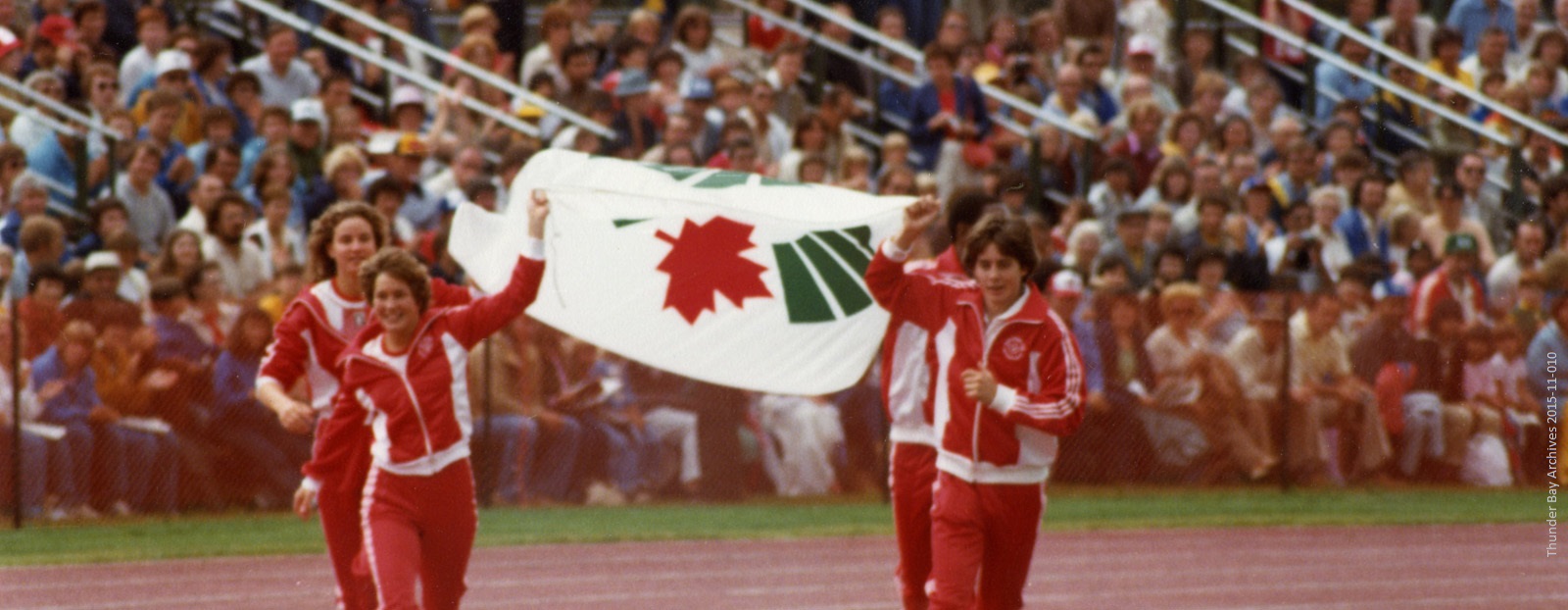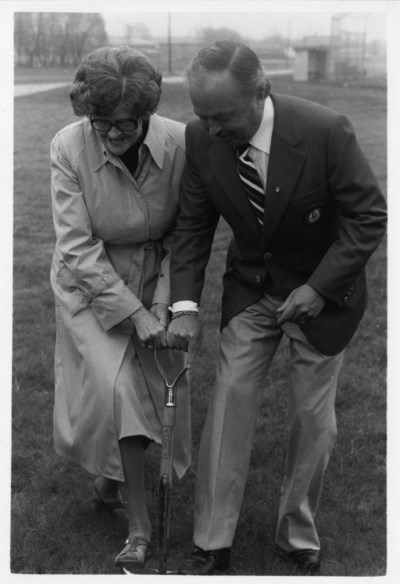 The decision to grant Thunder Bay the title of host city for the Jeux Canada Games of 1981 led to a range of developments and renovations to recreational and sporting facilities in the City. The most prominent example of these improvements is the construction of the Canada Games Complex. Designed by the architectural firm Marani, Roundthwaite and Dick and built by Gateway Building and Supply Limited, the Canada Games Complex was a major development project for the City.
The decision to grant Thunder Bay the title of host city for the Jeux Canada Games of 1981 led to a range of developments and renovations to recreational and sporting facilities in the City. The most prominent example of these improvements is the construction of the Canada Games Complex. Designed by the architectural firm Marani, Roundthwaite and Dick and built by Gateway Building and Supply Limited, the Canada Games Complex was a major development project for the City.
Although the Complex was initially devised to accommodate the swimming, waterpolo and diving competitions for the Jeux Canada Games, it was also built to serve as a recreational facility for the community. The Complex was designed to work with the establishment of community programs including fitness programs and learn-to-swim programs and boasts facilities capable of staging special events and exhibitions.
The host society and City Council realized that it was important to ensure that the facility remain useful to the community beyond its service in the Jeux Canada Games. This was particularly important given the struggles endured by previous host cities of the Games in maintaining their facilities and managing costs once the Games were over. To this end, City Council established a Mayor’s Special Advisory Committee consisting of the Mayor and senior City administration, as well as representatives from the Lakehead Board of Education, Lakehead University, Confederation College, Lakehead District Roman Catholic School Board, the host society, the local YM-YWCA and St. Joseph’s Heritage. The goal of this committee was to ensure that the Canada Games Complex and other upgraded recreational facilities would continue to be used to their full potential beyond the scope of the Games.
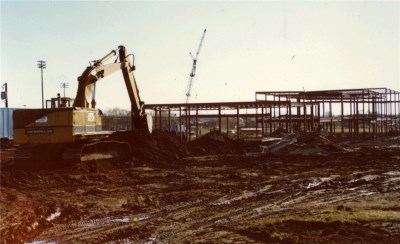 When it was first constructed, the central features of the Complex included a 77-metre Olympic standard pool, diving pool with diving stands at four different heights, a child care centre, a therapeutic pool, a fitness area and racquetball courts. However, the Complex also received a number of renovations and changes throughout the years in order to keep it relevant and up to date for the public. Some examples of these changes include the transformation of the racquetball courts into a weight room, the installation of multi-purpose training rooms and the ‘Thunderslide’ waterslide, and the transformation of the upper-level viewing deck into a running track. Recent renovations and upgrades that have ensured the facility is up to date technically and mechanically include paving and landscaping to the parking lot and entrances, roof replacement, a new reception area, and a variety of mechanical upgrades. These new upgrades were funded through the Ontario Infrastructure Program. There have been numerous other major upgrades, installations and refurbishments completed throughout the years since the building was first constructed.
When it was first constructed, the central features of the Complex included a 77-metre Olympic standard pool, diving pool with diving stands at four different heights, a child care centre, a therapeutic pool, a fitness area and racquetball courts. However, the Complex also received a number of renovations and changes throughout the years in order to keep it relevant and up to date for the public. Some examples of these changes include the transformation of the racquetball courts into a weight room, the installation of multi-purpose training rooms and the ‘Thunderslide’ waterslide, and the transformation of the upper-level viewing deck into a running track. Recent renovations and upgrades that have ensured the facility is up to date technically and mechanically include paving and landscaping to the parking lot and entrances, roof replacement, a new reception area, and a variety of mechanical upgrades. These new upgrades were funded through the Ontario Infrastructure Program. There have been numerous other major upgrades, installations and refurbishments completed throughout the years since the building was first constructed.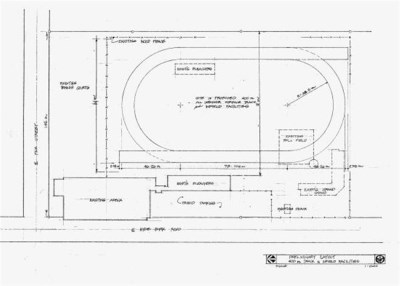
Aside from the construction of the Canada Games Complex, many other upgrades were also required to existing sports facilities in 1981 in order to ensure that they remained up to the standards established by the Canada Games Council. The list below provides some examples of other local facilities and the improvements they received for the Games:
- Port Arthur Stadium: Refurbishment of dressing rooms, public areas and the exterior of the Stadium. Repairs were also made to the amenities and the playing field.
- Fort William Gardens: Replacement of the tempered glass surrounding the ice rink, refurbishment of the dressing rooms and public areas and an expansion of the distribution system and sound system.
- Fort William Stadium: A new state-of-the-art four-hundred-metre all-weather track was constructed that included a soccer field. Additionally, six existing tennis courts were refurbished and three new courts were installed. Other installations included permanent and portable bleachers, new scoreboards and a new photo finish tower featuring an Omega timing system and camera. The site also received major mechanical upgrades including the construction of an underground power supply for a new transformer and distribution system to support the lighting and sound in the park.
- Prince Arthur’s Landing: A new Marina Service Building was constructed on Thunder Bay’s waterfront to accommodate the sailing competition.
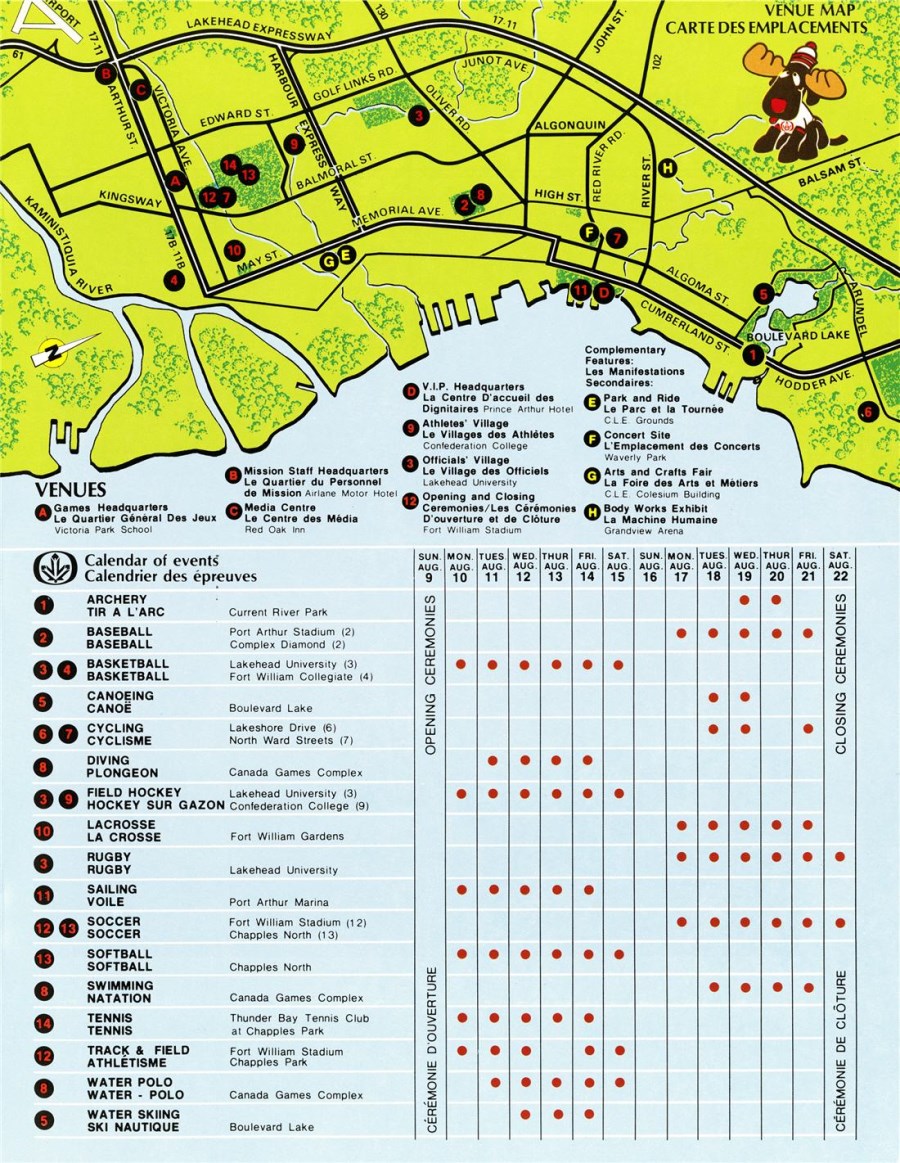
Contact Us


